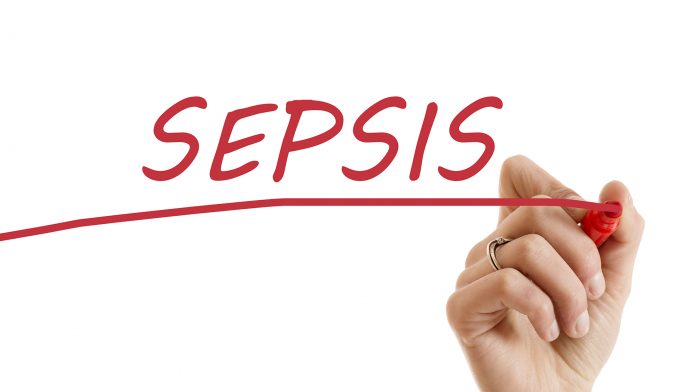
With early diagnosis being vital in the treatment of sepsis, Sepsis Alliance shares how they are working to raise awareness of the condition’s associated symptoms and risks.
Sepsis Alliance, the first and leading sepsis organisation in the United States, seeks to save lives and reduce suffering by improving sepsis awareness and care. Sepsis, the body’s overwhelming and life-threatening response to infection, affects an estimated 49 million people worldwide each year. More than 1.7 million people in the US are diagnosed with sepsis each year and 270,000 of those people die. Sepsis is also the most common complication observed in severe cases of COVID-19.
Early recognition and treatment of sepsis saves lives and limbs. Sepsis Alliance recently announced the results of the 2021 annual sepsis awareness survey. The survey measures awareness of the term ‘sepsis’ as well as knowledge of sepsis and its after-effects in a representative population of United States adults. Awareness of the term ‘sepsis’ reached 65% this year, with Black adults showing the lowest awareness of the term and white adults the highest.
Recognising Sepsis
Though it is important to recognise the word ‘sepsis,’ it is also important to understand what sepsis is. This year’s survey found that over 40% of adults state that they do not know sepsis is a complication of an infection. Without that knowledge, people may not seek emergency care should sepsis symptoms develop after an infection and, research has found, as many as 80% of septic shock patients can be saved with rapid diagnosis and treatment. Sepsis Alliance launched the Sepsis: It’s About TIME™ campaign in 2018 to share the signs and symptoms of sepsis and the need to seek urgent medical attention should those signs and symptoms present:
. T – temperature, higher or lower than normal;
. I – infection, may have signs and symptoms of an infection;
. M – mental decline, confused, sleepy, difficult to rouse; and
. E – extremely ill, severe pain, discomfort, shortness of breath.
Additionally, of those aware of the word ‘sepsis,’ only 51% are aware of the term ‘post-sepsis syndrome,’ which is used to describe the combination of complications one might experience after surviving sepsis. Over 50% of sepsis survivors experience post-sepsis syndrome, which can include muscle or joint pain, hair loss, reduced organ function, depression, and other psychological, emotional, and physical effects. This lack of awareness surrounding the difficulties one might face after surviving sepsis is another strong call-to-action for Sepsis Alliance work.
Antimicrobial resistance and sepsis
Antimicrobial resistance (AMR) is another challenge in the treatment of sepsis. Specific strains of bacteria, viruses, fungi, or parasites that make people sick have learned how to defeat the antimicrobials designed to treat them. These drug-resistant germs, also known as superbugs, are currently putting millions of people at risk of developing a life-threatening, untreatable infection, and potentially sepsis from those untreatable infections. As reported to the Centers for Disease Control and Prevention, more than 2.8 million antibiotic resistant infections occur in the US each year, and more than 35,000 people die as a result. Sepsis Alliance launched the End Superbugs campaign in 2021 in response to the lack of knowledge around AMR and the importance of understanding how to prevent resistant infections and sepsis.

The World Health Organization considers AMR to be among the top 10 threats to global health as it has the potential to ‘turn back the clock to a time where infections such a pneumonia were unable to be treated easily.’ Like sepsis, AMR also lacks awareness even while recognised as a serious threat. In early 2021, an online survey was carried out among 6,330 adults living in the United States, Brazil, China, India, and Spain. Globally, less than half of adults surveyed had knowledge of the effects of AMR.
Two contributing factors have played a role in AMR becoming the threat it is today:
- Not taking antimicrobials as intended: taking them too often, unnecessarily, or not finishing a course of medicine. The more a germ is exposed to the same antimicrobials designed to take it down, the more likely it is to learn how to outsmart the medicine and survive; and
- While superbugs have evolved, our antimicrobials have not. First widely used in the 1940s, antimicrobials (starting with antibiotic penicillin) have saved millions of lives. After this major discovery, there have been few new advancements.
Healthcare disparities and sepsis
Sepsis Alliance has also become increasingly aware of disparities in healthcare based on socioeconomic status, race, and other factors affecting sepsis diagnosis and treatment in the United States. The 2021 awareness survey found that those who identify as white are significantly more likely to be aware of the term ‘sepsis’ (67%) than those who identify as Black (57%), though according to one study, Black and ‘other non-white’ individuals have nearly twice the incidence of sepsis as white individuals.
In early 2021, Sepsis Alliance made an organisation-wide commitment to equity, diversity, and inclusion (EDI) work and released an internal EDI pledge to help close gaps in patient outcomes, augment the mission statement, and continue making good on the initial and enduring promise: to reduce the suffering caused by sepsis. Sepsis Alliance later invited corporate, nonprofit, and healthcare partners who work to mitigate the global challenges associated with sepsis to join the organisation in fostering health equity by signing onto a public EDI pledge, found at HealthEquityPledge.org.
What can we do
As many as 80% of septic shock patients can be saved with rapid diagnosis and treatment, reinforcing the need for sepsis awareness efforts. The general public, and especially those most vulnerable to infection, need to know when to seek emergency care. Healthcare providers also need to be educated and equipped to quickly identify and treat sepsis. Finally, healthcare providers need to be informed about post-sepsis syndrome, to arm their patients with the referrals, tools, and information that can help them feel more understood and less alone in their post-sepsis journey.
After more than 10 years of educational efforts for the general public and healthcare providers, Sepsis Alliance is pleased to find awareness rising, and motivated to continue sharing sepsis information that will save lives and limbs all over the world. For more information and resources to do your part, please visit Sepsis.org.
Alex Sadorf
Director of Communications
Sepsis Alliance
www.sepsis.org
This article is from issue 19 of Health Europa Quarterly. Click here to get your free subscription today.
























